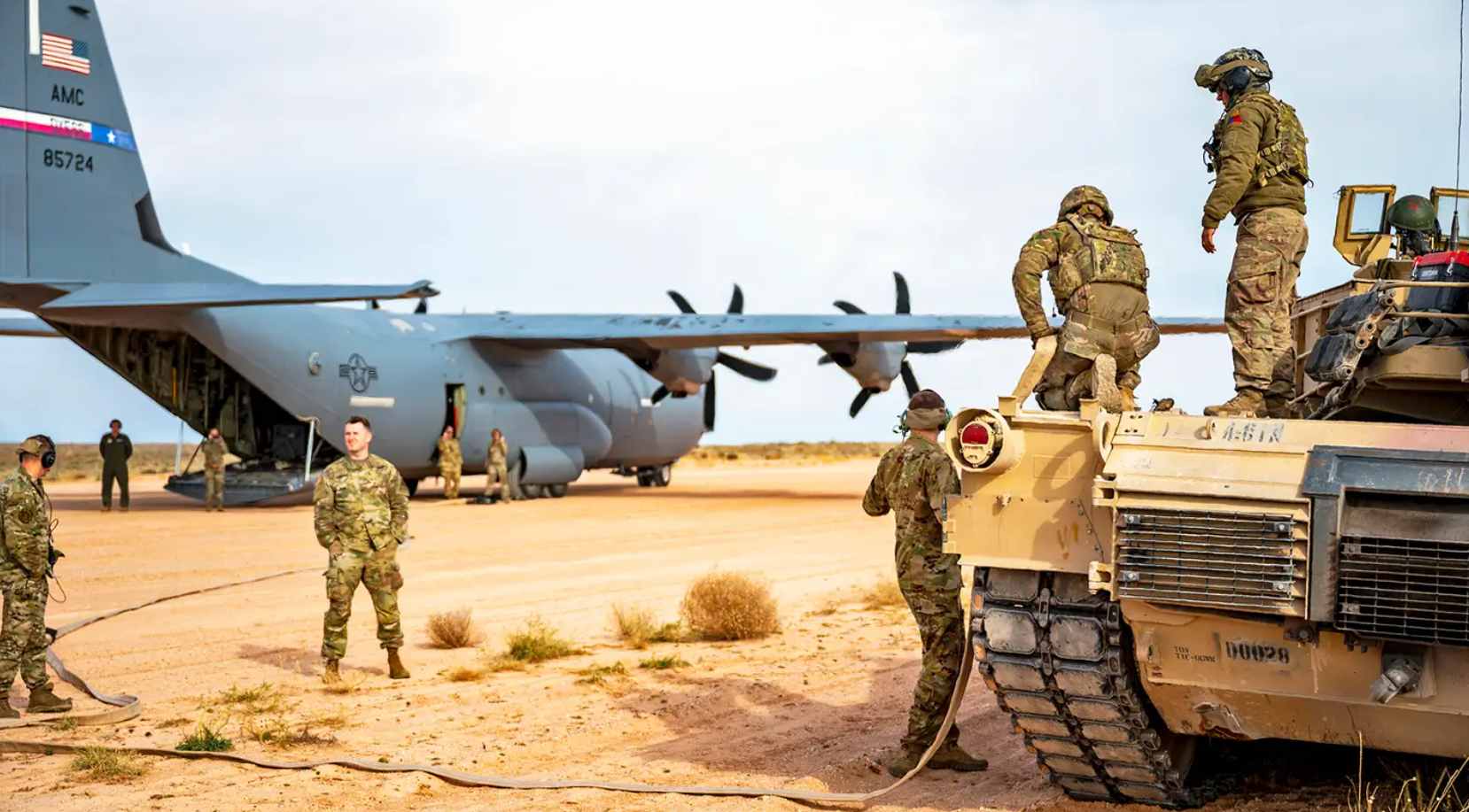On January 17, the United States Georgia General Assembly approved a resolution commemorating the 70th anniversary of the first flight of the Lockheed Martin C-130, manufactured at the company’s Marietta facility.
The resolution designates 2024 as “the Year of the Super Hercules” and was introduced by five State Senators, acknowledging the significant impact of the C-130 on Georgia’s aerospace sector.
For the past seven decades, Lockheed’s Marietta facility has been the exclusive birthplace of every Hercules aircraft, earning it the title of “Georgia’s aerospace ambassador to the world,” as described by Rod McLean, the plant’s general manager.
The first flight of the Lockheed YC-130 Hercules prototype occurred on August 23, 1954, and it has been in uninterrupted production ever since.
McLean noted that the C-130 is the longest-running military aircraft production program in history.

Expressing gratitude for the Gold Dome (Georgia State Capitol) support, McLean emphasized that this backing enables Georgia to maintain its position as a national leader in aerospace research, development, and manufacturing.
The C-130 has served as Georgia’s aerospace representative globally, with over 2,700 planes delivered to over 70 customers and operators worldwide.
Looking ahead, McLean anticipates Lockheed’s continued production of the C-130 for the next decade, emphasizing the remarkable achievement of over 70 years in production.
The Marietta plant’s sustained ability to construct the C-130 is attributed to solid partnerships with local government and the dedicated efforts of its employees.
McLean highlighted an increasing demand for the C-130, with emerging customers, such as Indonesia and the Philippines, playing a significant role in its sustained success within the aerospace industry.
The senators mentioned that the manufacturing of the C-130J sustains the livelihoods of numerous Georgians, providing employment opportunities in various sectors, including advanced manufacturing, engineering, artificial intelligence, data analytics, information technology, finance, and operations.
The Time-Tested Excellence Of The C-130 Hercules
The C-130 Hercules, a powerful and often deemed iconic military transport aircraft crafted by American manufacturer Lockheed Martin, is a pivotal player in military aviation.
Initially designed for troop and cargo transport, as well as medical evacuations, the Hercules has evolved into a versatile platform with diverse roles. Over the years, the Hercules has seamlessly adapted to various roles, becoming a cornerstone in multiple operations.
The latest iteration, the C-130J Super Hercules, introduced in 1999, is hailed as “the most advanced Hercules ever built.” Over 520 C-130Js have been manufactured at the Marietta plant.”
In 2018, the US Air Force highlighted its continued significance, citing its contributions to tactical airlift, Antarctic resupply, aeromedical evacuation, disaster relief, search and rescue, firefighting, and special operations support.
The genesis of this aircraft traces back to the Korean War when a need for a military aircraft capable of transporting combat troops over medium distances to challenging landing strips became evident.

In response, Lockheed Aircraft Corporation emerged victorious in a bid, leading to the commencement of the C-130 program.
Delivered in the early months of 1956, the initial fleet of C-130s took on pivotal roles within various airlift units across the United States before extending their operational reach to Europe and the Far East.
Engaging in their first combat mission in Europe later that year, the C-130s experienced their first combat loss in 1958 when a C-130A-II was shot down over Armenia during a reconnaissance mission.
Yet, it etched its name by becoming the most significant and heaviest aircraft to land on and fly from an aircraft carrier. This achievement occurred in October 1963 during a test designed to assess its viability as a carrier onboard delivery aircraft.
In subsequent years, the C-130A commenced sorties for the US Air Force in Vietnam, undertaking a spectrum of missions, including cargo transport, leaflet drops, and weapon deliveries along the Ho Chi Minh Trail. Furthermore, C-130Bs dropped two 10,000-pound bombs in Vietnam in October 1968.
Beyond its reputation as a military workhorse, the C-130 solidified its standing as one of three legendary Lockheed aircraft operated by the CIA in the 1960s, joining the esteemed ranks of the U-2 and A-12 (SR-71) as an intelligence-gathering tool.
In 1969, a CIA-operated C-130E executed a clandestine drop of sensor pallets near China’s Lop Nur Nuclear Weapons Test Base to acquire critical intelligence on Chinese nuclear capabilities.
Taking on a surprising and unconventional role, special EC-130E Commando Solo played a pivotal part by transmitting radio and TV broadcasts over Iraq during nighttime hours. This uncommon tactic was deployed as part of psychological warfare campaigns, setting the stage for the 1991 Persian Gulf War and the 2003 Iraq War.

Besides this, the C-130 Hercules further solidified its role by playing a crucial part in the daring 1976 Entebbe raid.
During this operation, Israeli commando forces executed a daring mission to rescue 103 passengers from an airliner hijacked by Palestinian and German terrorists at Entebbe Airport in Uganda. This arduous journey was facilitated by four Israeli Air Force (IAF) Hercules aircraft.
In the conflict of the Falklands War in 1982, C-130 aircraft operated by the Argentine Air Force engaged in hazardous nighttime resupply missions, acting as essential blockade runners to support the Argentine garrison stationed on the Falkland Islands.
Beyond its military exploits, the C-130 Hercules has proven indispensable to NASA, exemplified by its recent mission. On January 9, the NASA C-130 Hercules provided vital aerial delivery support for a successful commercial crew parachute airdrop test at the US Army’s Yuma Proving Ground in Arizona.
This underscores the adaptability and significance of the C-130 Hercules across a spectrum of military and civilian missions.
- Contact the author at ashishmichel(at)gmail.com
- Follow EurAsian Times on Google News




